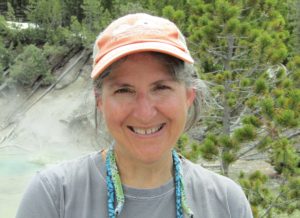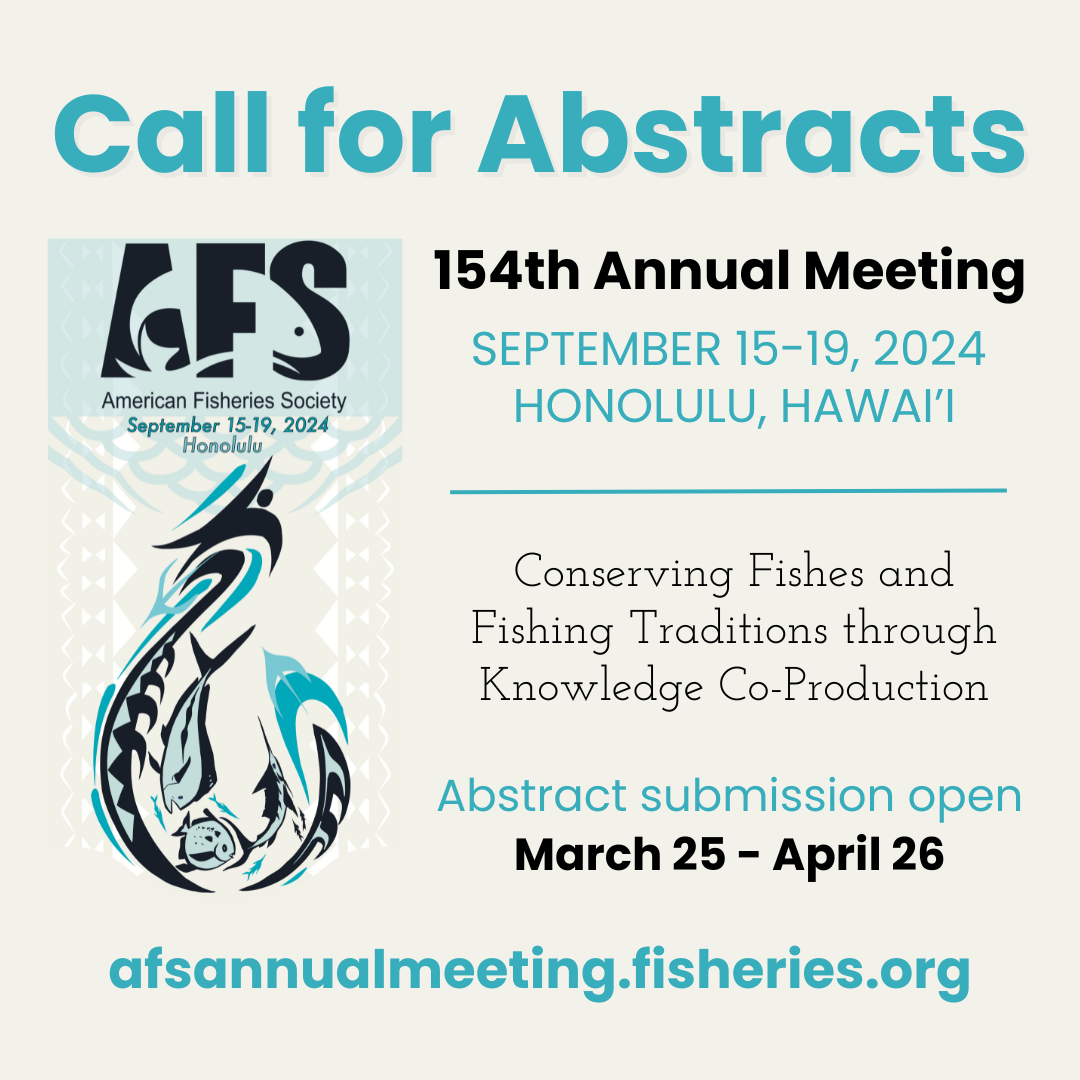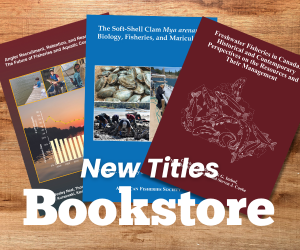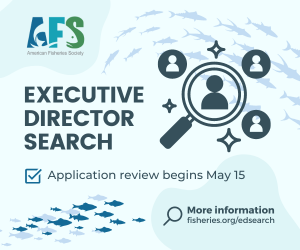
BACKGROUND
I have been told that I am not the usual type of candidate for the American Fisheries Society (AFS). In many ways, this is true. I do not have a Ph.D. I am not a career academic, nor am I a career public employee. There will be many years before I retire. I have published papers, but not that many. I am not an authority on one aquatic species, family, or habitat type. So, why am I on this docket? I am a candidate with a broad and, perhaps, slightly different perspective who has a drive to learn from others and move AFS forward. My experience as a biologist crosses several state lines. I have managed projects in Montana primarily, but also in Idaho, Washington, Oregon, California, and Nevada. There have been many days and weeks spent monitoring and assessing riparian and wetland habitats and fisheries populations, but I have also led meetings and facilitated decisions among diverse groups. During the many environmental assessments that I have completed, I have grappled with understanding the laws and regulations that govern the how, when, why, and where of mining, hydropower, wind energy, logging, road development, and other various forms of human infrastructure that affect rivers, streams, wetlands, and lakes. In many cases, the human application and interpretation of laws and regulations make the difference between a project that supports or even improves the condition of a water body and one that degrades it. Fisheries problems often have societal roots, and this connection has been key to my career. My career path is also a little atypical. I completed my B.S. in biology at the University of Oregon studying ecology and population dynamics with the Cascade Mountains and the Pacific coast as the lab environments. I spent a couple of summers in Alaska paddling around Prince William Sound, applying what I had learned in school to pre-and post-Valdez oil spill conditions. After I graduated, I moved to Montana and taught at a high school situated on the Yellowstone River. Teaching young people honed my appreciation for plain language in conveying current science and the critical element of meeting the public where they are and answering their questions before overwhelming them with jargon. I earned my M.S. degree from Montana State University with a project that looked at repurposing water rights to conserve native fisheries, again on the Yellowstone River. After a seasonal position with Montana Fish, Wildlife, and Parks, I joined a consulting firm and began working on a wide variety of state and federal projects across the West, evaluating resource uses from desert plateaus to temperate rain forests. My experience as a consultant is also atypical in that over my 19 years, my clients have included just about every public lands management agency while my private client projects are few and far between. Outside of work hours, I have served on boards for an outdoorscience school, a community running club, and a watershed group. To me, the thread that runs through all of my professional experiences has been the constant mediation of public resource uses and the importance of communicating how and why we manage these areas to the public. I may know about fish and water, but I work with people.
SOCIETY INVOLVEMENT
I joined AFS as a graduate student in 1996 at the insistence of my advisor, Bob White. Annual Montana AFS meetings were a great resource for me professionally and personally. After a few years, I decided it was time to contribute more. I pursued certification as a Fisheries Professional (FP-C) early in my career and believe that the FP-C program has benefitted me as well as raised the profile of AFS as an organization. I served as Montana Chapter (MTAFS) president from 2006 to 2007 and as the Western Division (WDAFS) president from 2009 to 2010. In 2006, Montana hosted the WDAFS meeting and I was the meeting coordinator. My time on these two ExComs was spent engaging in the Pebble Mine discussions; facilitating the Mexico Chapter’s increased AFS involvement; and responding to President Obama’s adaptive management plan for the Columbia basin, the AFS mining policy revision, and local biologist’s concerns on Montana river management policy. In 2013, I became chair of the Montana Resource Management Concerns Committee (RMCC) and later that same year was asked to lead the AFS Resource Policy Committee (RPC). I have also served on the Time and Place (2010–2013), Nomination (2010–2011), and Professional Certification committees (2012–2017). As part of the WDAFS ExCom, we created a student representative position to facilitate leadership experience for young professionals. As chair for the AFS RPC, I have worked with young professionals as Policy Fellows and believe that encouraging and supporting the perspectives and experiences that our newest members bring to AFS is critical to keeping our organization current and influential in fisheries science. While chair of the RPC, we grappled with how to move our policy statements from passive, static fisheries white papers to responsive resources that are accessible, timely, and sought out by policymakers. A theme for my AFS involvement would be finding opportunities to expand AFS influence by recruiting and encouraging quality, knowledgeable members to add their voices and efforts to current issues in fisheries science.
VISION
My career has shown me that policy and regulations must be built on the best, most current science to function well. It is incumbent on those who develop scientific knowledge to make it accessible to the decision makers. We cannot expect good decisions unless our leaders are working with accurate, relevant information. In my home Chapter, the RMCC has provided and called for better information to design a passage plan for Pallid Sturgeon Scaphirhynchus albus on the upper Yellowstone River. Montana AFS is not pushing one alternative, but we are pushing for using robust biological criteria to select the best alternative. Our Chapter decided that as fisheries professionals, we were responsible for providing relevant information on how the project could best benefit the fishery, and we acted on that decision. I am also committed to making AFS more representative of our world. I was the fourth and third woman MTAFS and WDAFS president, respectively, over the then 40+ years of their existences. The bathroom line-o-meter (a measure of how long the lines are at men’s versus women’s bathrooms during a conference break) at any AFS conference confirms that fisheries is still a male-dominated field, and I would contend that it remains focused on western, Anglo perspectives. The world’s fisheries support all peoples and are arguably more critical to regions where skins are all colors and fish provide exceptionally accessible animal protein. AFS’ recent efforts to increase member recruitment and retention in fisheries science have put the spotlight on a need to be more welcoming and encouraging and to seek out a diverse array of students, young professionals, and other potential members. We need to open our minds to the benefits of a variety of perspectives, cultural experience, and backgrounds. Peer-reviewed literature is a valued foundation for decisions at AFS, and the literature supports many benefits of diverse work teams across all kinds of endeavors, including research and environmental sciences. As a society, we need to seek out and listen to these diverse voices and put into practice what the literature demonstrates would support our young professionals’ long-term participation as fisheries scientists. I would advocate implementing programs to recruit STEM (science, technology, engineering, and mathematics) students to fisheries professions. I am committed to making fisheries a profession that reflects the world’s makeup and is thus better equipped to address the world’s aquatic ecological challenges. Although I have not often been in the spotlight, I am someone who works to gets things done, and I would be honored to serve AFS as a Society officer.






